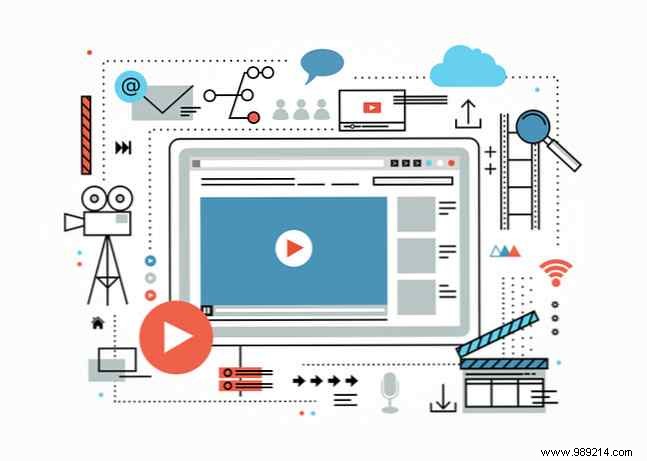There seems to be no end to human hunger for the media. This is how we stay on top of current events and entertain ourselves. And while we've recently seen a proliferation of next-generation media channels, all of which provide content in a variety of formats, some media put more pressure on our technology than others.
Anyone who streams music or videos regularly knows this. All-you-can-eat music and video is a great thing…until your stream slows down until it drags or your video dissolves into a madness of pixels in the buffer.
We're here to help, with a few simple tips to speed things up.
As a mild disclaimer, some readers may find some of the following advice somewhat obvious. That's great, pats on the back. However, not everyone is tech savvy, so I hope this article offers solutions that you personally haven't considered before.
We've seen some decent cases made for the Internet of Things and all of its brilliant far-future potential The Internet of Things:How Your Life Will Change in the Next Year The Internet of Things:How Your Life Will Change in the Next Year The Internet of Things has suffered its own Cambrian explosion and promises to make your life much more comfortable in the coming years. This is why. Read more . But that's not to say that we don't have some challenges to overcome first. The most obvious problem is the large number of devices in our homes that depend on Internet connectivity.

Sometimes a lack of internet coverage can render even its basic functionality unusable. It used to be only personal computers affected by this problem. We all now have connected smartphones, tablets, bathroom scales, televisions, refrigerators, and even smart clothing.
What this means for the streaming connoisseur is that you need to pick your battles. How many “clever” objects do you really need in your life? If this means allocating more bandwidth to the hungriest devices, could you do it without the “smart” rectal thermometer and salt shaker?
One thinks that it shouldn't be too difficult a sacrifice to make.
You wouldn't believe all the digital clutter our connected devices accumulate during typical streaming and browsing sessions. Cached Files 3 Hidden Switches That Clear Chrome Cache Instantly 3 Hidden Switches That Clear Chrome Cache Instantly For optimal browser performance, you should clear your cache regularly. There are three hidden switches here that allow you to do so without interrupting your workflow. Read More Every time a website is updated behind the scenes, many of these files become irrelevant clutter.
If you want to get to the bottom of your slow streaming issues, it's time to learn how to delete your cache files.
Modern web browsers and operating systems are pretty good at removing some of this crap on a regular basis. But if you're not in the habit of shutting down your devices properly or on a regular basis, you probably won't realize the benefits of these features.
You can navigate to your desktop or mobile browser settings and delete these temporary cache files manually. It should help your next streaming session run a bit more smoothly.
Cords and cables are not sexy. They are not elegant or convenient. And yet, for power users or anyone else who wants superior performance from consumer-grade hardware, cables are a must. How to Prioritize Ethernet over Wi-Fi on Mac OS X How to Prioritize Ethernet over Wi-Fi on Mac OS X Reuse OS X with both Ethernet and Wi-Fi enabled, but the system still prioritizes Wi-Fi, here's what you can do to fix it. Read More PC gamers swear by wired peripherals like mice and keyboards for their performance.
And streamers? Serious streamers choose wired internet over wireless internet every time.
While most of us get by on wireless connections, the difference in performance can be dramatic if you switch to wired Internet connections using an Ethernet cable. Newer cables can support speeds of up to 1 Gbps. Compare this to the speed of your typical wireless home router, which is bottlenecked at approximately 150 Mbps or less.

That is a big difference. Of course, the real limiting factor is the speed of your own Internet service. You also may not want to run into wiring behind walls or put it on top of a drop ceiling. But if you do the job right, you should only do it once.
Best of all, even long runs of Ethernet cable are quite affordable. And if you own a home, a clean install might slightly increase its resale value.
Buried deep within your favorite browser is a setting called "Disable hardware acceleration." Have you seen it before? Do you know what it does?
This option is in response to a common issue experienced by chart and graph users. The goal of hardware acceleration is to shift some of the software load to your machine's processors, which improves performance for certain tasks, including streaming and manipulating digital media.
Unfortunately, because there is so much hardware out there, certain devices or combinations of internal components work more predictably. What You Need to Play Video Smoothly on Your PC What You Need to Play Video Smoothly on Your PC Choppy video playback can have many causes, but most are easy to fix Here is a list of things to watch and how to optimize them for smooth video streaming. Read More If you have been unsuccessful in improving your transmission speeds in any other way, please take a moment to locate this setting and disable it.
How do you do it? Admittedly, it's not an option (or an issue) in every browser or piece of software. Adobe users have their own instructions. You can also search for discussions about how this issue applies to services and software like YouTube and Google Chrome.
Remember when we mentioned that some of these tips might seem obvious? This could be one of them..

Still, it's not impossible that you've been limping around all this time with your website's settings changed to "Maximum Resolution." The next time you start a video stream, pay close attention to how your browser or device handles it. Try to play the highest resolution video first? Does it start with a low resolution and slowly increase the quality as you establish a connection?
If your videos seem to default to full resolution every time and are causing slow speeds or endless buffering, switch to the best resolution. The small step down from 1080p to 720p could greatly improve your experience. And visually speaking, you'll barely notice the difference on most mobile screens.
Do companies like Apple and Google have any incentive to look for cheaper flash storage when we can stream most of our media whenever we want, without storing it locally?

The answer is No. Digital services are the future, and a gold mine of revenue, to boot. However, if you use a device like a smartphone or tablet to consume most of your media, you should use its storage space whenever possible. You can enhance your streaming experience by downloading files locally How to Download Netflix Videos for Offline Viewing How to Download Netflix Videos for Offline Viewing Netflix now allows you to download select movies and TV shows for offline viewing. Which is good. This article explains everything you need to know about downloading Netflix videos on your device. Read More It also means you won't have to rely on spotty internet connections while you're on the go.
Most major media services let you do this now, including Spotify, Stitcher, Apple Music, and even Netflix. If you find your storage full or if you want to experience something else, just delete the local files and download something else when you have a reliable connection.
Even if you already knew you should lower your resolution, now you have some other troubleshooting tips to try before you give up and do something else.
Look for that pesky hardware acceleration toggle in settings and clear your caches while you're at it. Try to crack your stable device from connected devices or even invest in the benefits of a physical connection over Ethernet.
The point is that you no longer have to tear your hair out with a slow transmission. And best of all, most of these fixes are free or inexpensive to try.
Do you know of any additional ways to speed up your favorite streaming service? If so, tell us about it in the comments below!